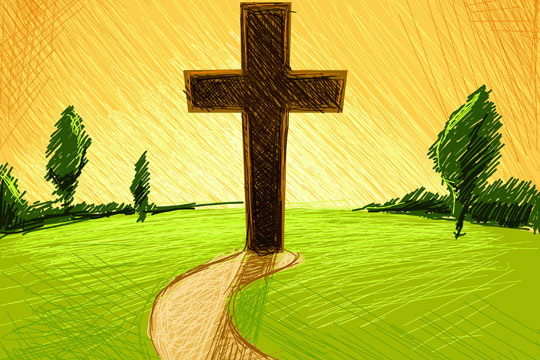
I have heard some catechists say they will never use blackline masters (BLMs) in religious education classrooms, and other catechists like to use every one their curriculum provides. These worksheets and other handouts are usually provided as part of the curriculum; a good catechist manual will advise when to integrate a BLM into the lesson. The key to using worksheets effectively in faith formation is understanding that they are resources for activities, not time-fillers, and should be chosen to meet the needs of the group.
- Gathering activities—As the young people come into the learning space one by one, I like to have an activity ready for them to start as soon as they sit down. Puzzle sheets like word searches or crossword puzzles sometimes draw criticism as being time-fillers, but I find them great gathering activities. I’ve used word puzzles as a fun way to help familiarize young people with the vocabulary we will use in that session.
- Prayer or informational booklets—These are probably my favorite type of BLM. They can present a lot of material in an easily digestible format and can be used in the session in various ways. For instance, when teaching about Lent and Holy Week, I use the Stations of the Cross booklet from Christ Our Life Grade 7 with the young people as a guide to prayer and reflection on this devotion. I’m looking forward to using the Introduction to Ignatian Spirituality booklet in a lesson this year when we talk about St. Ignatius of Loyola and the gift of discernment.
- Prayer sheets—Falling into the handout category of BLMs, these are one-page resources with the words of a prayer for a prayer experience. While the Finding God curriculum we use in our parish has wonderful prayer experiences built into each session, sometimes I like to go off-book to introduce a different prayer that’s meaningful to the particular group in front of me, such as bringing in prayers to the finalists in our patron saints election last year.
- Assessments—Different religious education programs may have different policies for how they like to handle assessment. A formal assessment asks students what they know or understand, and a good worksheet might be just the tool to help students express their answers.
- Crafts—Some catechists are gifted with more creative talents than others. For those who aren’t as gifted in the arts-and-crafts, worksheets with simple art projects can engage visual and hands-on learners in the lesson.
- Take-home sheets—We only get a limited amount of face time with the young people, so sending home a worksheet can be a way of extending the lesson or preparing for the next one. I never like to call these “homework,” because that sounds too much like a school assignment; but I do like to provide take-home activities, and BLMs are often good sources for these activities. (I also provide other forms of take-home activities to mix things up, but that’s for another post.)
- Current events—These are sheets to bring into the session materials based on events happening in the news. We will keep the people we read about in our minds and hearts. Bringing in these types of materials shows that our faith is a living, caring faith that reaches beyond the textbook into the real world.
- Art print BLMs—A special feature for Finding God users is the Art Prints, which bring works of art to our children in ways that integrate with the lessons from Scripture and Tradition. The BLMs help the catechist lead this special part of each session.
No matter the type of BLM used, it is important to remember that worksheets are just a tool in the learning process and should be integrated in thoughtful ways. What’s your favorite way to use worksheets in your classroom?





Be the first to comment